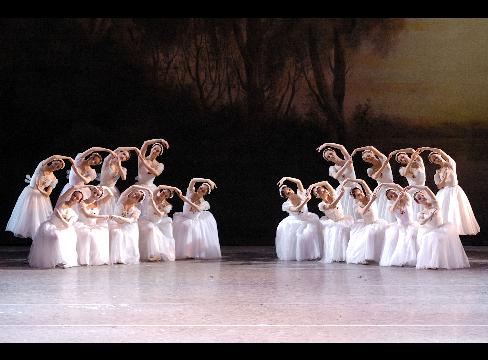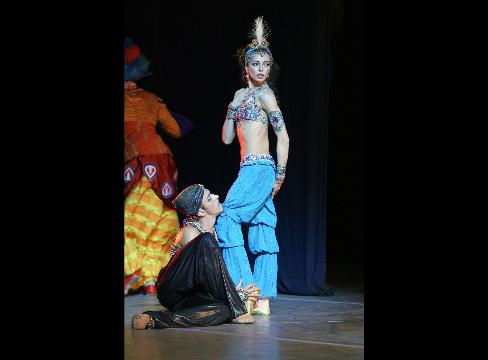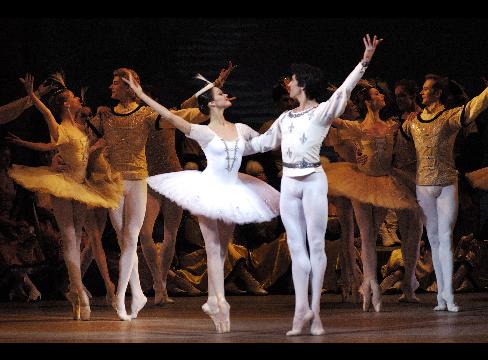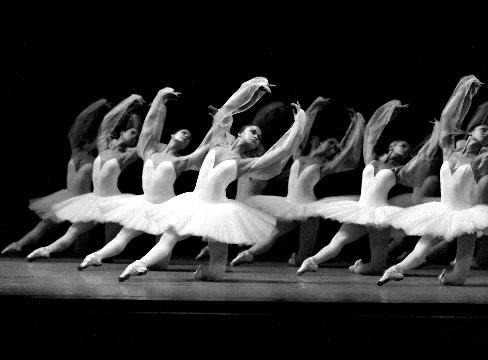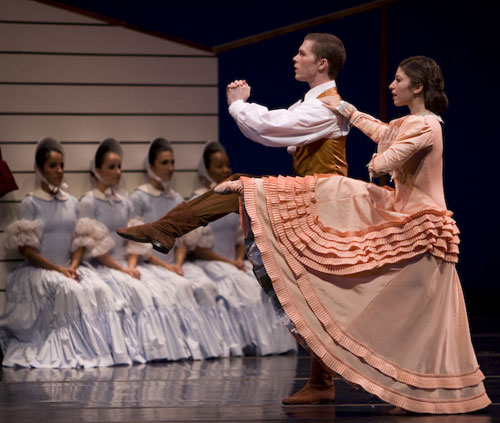This article originally appeared in the Culture section of Bloomberg News on April 29, 2008.
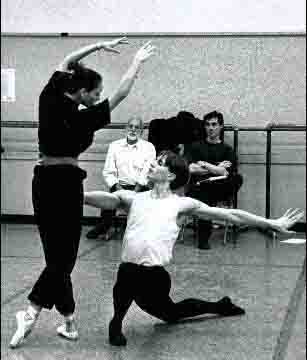
Jerome Robbins, second from the left, observes a New York City Ballet rehearsal in New York in this undated handout photo. Starting April 28, 2008, at Lincoln Center’s New York State Theater, the New York City Ballet begins a season-long homage to the late Jerome Robbins on the 90th anniversary of his birth. Photographer: Paul Kolnik/NYCB via Bloomberg News
April 29 (Bloomberg) — The ringmaster of a mock circus directs 48 little girls from the School of American Ballet who finally spell out JR, the initials of the performance’s honoree. Tonight at Lincoln Center’s New York State Theater, the New York City Ballet begins a season-long homage to the late Jerome Robbins on the 90th anniversary of his birth. It’s an unabashedly show-bizzy gesture for a choreographer who was, in truth, better suited to the Broadway stage than to ballet’s.
Think of “West Side Story,” the reimagining of the Romeo and Juliet legend as a timely saga of teenage street-gang conflict and young love; the lusty “Fiddler on the Roof” and the sheer enchantment of the “Small House of Uncle Thomas” ballet from “The King and I,” each created for Broadway.
Robbins’s choreographic debut in the ballet realm, “Fancy Free,” (made for American Ballet Theatre), following the escapades of three sailors out on the town, was a dazzling hit and remains a repertory favorite. Like all of Robbins’s choreography, it’s set down to the last fingernail — while creating an illusion of naturalness that Robbins never achieved again.
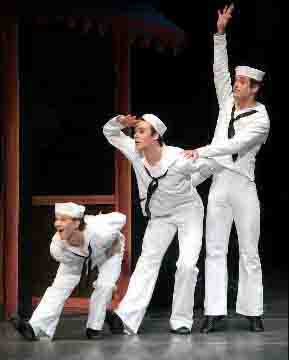
Dancers, from left, Daniel Ulbricht, Tyler Angle and Benjamin Millepied perform in New York City Ballet production “Fancy Free,” choreographed by Jerome Robbins, in New York on Feb. 11, 2006. On the evening of April 28, 2008, at Lincoln Center’s New York State Theater, the New York City Ballet begins a season-long homage to the late Jerome Robbins on the 90th anniversary of his birth. Photographer: Paul Kolnik/NYCB via Bloomberg News
He could be a demon in the rehearsal studio — terrible tales abound — but his implacable demands served vaulting creative visions he felt were just beyond his grasp. One must add, to his credit, that when he decided to commit himself, long-term, to a classical company, he chose to work in the shadow of George Balanchine at the New York City Ballet. In any other company, he would easily have been top guy.
Package Deals
The City Ballet’s nine-week season will offer 33 Robbins ballets. As is the troupe’s current custom, the repertory is arranged in package deals — groups of ballets that can only be seen as a unit. The tactic is bound to squelch the enthusiasm of dance fans who attend regularly and appeal, instead, to a general audience reassured by group labels like “All American Fare” and “Generation Next.”
The Robbins packages being offered in the first two weeks contain only two ballets I’d recommend unreservedly: “Les Noces” (better than anyone else’s version but Bronislava Nijinska’s) and “Fancy Free.” Matters improve later with “Afternoon of a Faun,” “The Cage” and an all-Chopin program containing “Dances at a Gathering,” “Other Dances” and the still hilarious “The Concert.”
Topping the list of ballets you’d be happier skipping is the endless, slow-motion, pseudo-philosophical “Watermill.” Still, it’s bound to sell well since the company has been astute enough to call Nikolaj Hubbe out of recent retirement to play the lead. Hubbe, with his maverick imagination, and the creator of the role, Edward Villella, all rugged intensity, are the only two I can imagine making something riveting of such navel gazing.
Of course, all of it — the splendid, the so-so and the experiments that never worked — deserve their moment in the spotlight on this occasion, if only as an indication of the scope and evolution of Robbins’s work.
At Lincoln Center through Jun. 29. Information: +1-212-721-6500; http://www.nycballet.com.
© 2008 Bloomberg L.P. All rights reserved. Reprinted with permission.




